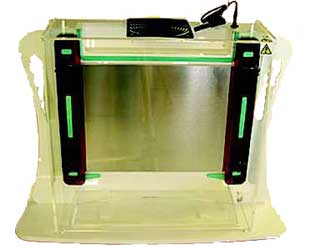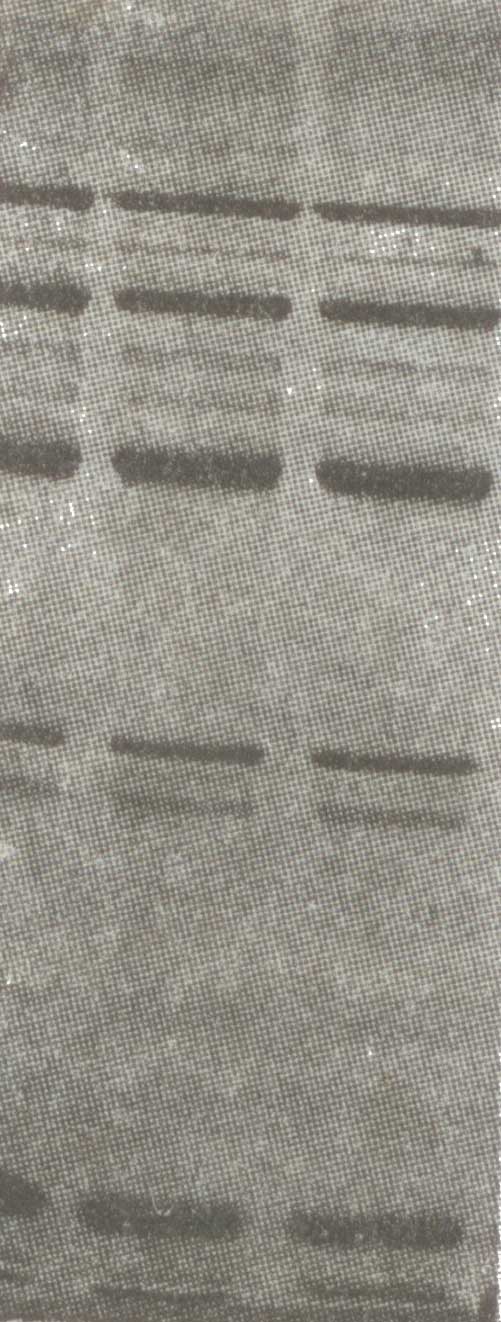Electrophoresis
Electrophoresis refers to carrying something by applying electricity. It is an analytical device commonly used for separation and purification of DNA fragments. A gel is used in electrophoresis which is either polyacrylamide or agarose.The former is preferred for smaller DNA fragments and the latter for larger ones. Agarose is a purified powder isolated from agar, a gelatinous material of sea weeds. Agarose powder when dissolved in water and boiled results into gel form. The gel prepared in a mixture of salt and water becomes a goods conductor of electricity. The gel forms small pores the size of which varies depending on its amount in a given water. These pores act as molecular sieve. These allow the larger molecules to move more slowly than the smaller molecules.
The electrophoresis box consists of a positive and a negative electrode, a shelf designed to held the gel, a comb used to form the wells within the gel, and a power supply (Fig. 3.10A). The DNA to be electrophoresed is digested with restriction enzymes which yields DNA fragments of unequal length. The fragments are mixed with sucrose and a dye (ethidium bromide or methylene blue) which altogether is known as loading dye. Sucrose increases the density of DNA preparation and dye increases the visibility of the preparation.
The preparation is loaded into wells at one end of the gel. At least one well is filled with reference DNA (i.e. DNA fragments of known length) for comparison with those of unknown length. Electric current is applied at opposite ends of electrophoresis chamber. A current is generated between a negative electrode at the top of loading end of the gel and a positive electrode at the bottom of the end of gel resulting in movement of fragments through pores of the gel. DNA molecules have a negative electric charges due to PO4-4 which alternate with sugar molecules. Opposite electric charges tend to attract one another. The small DNA molecules move at faster speed as compared to larger ones. All DNA molecules of a given length migrate nearly the same distance into the gel and form bands. Each band represents many copies of DNA fragments having about the same length. After completion of electrophoresis gel is removed from the chamber and stained to make bands easily seen either with ethidium bromide (EB) or methylene blue. When gel is illuminated with UV light, fluorescent orange, bands appear due to EB; methylene blue results in blue bands under normal room temperature (Fig. 3.10B).






